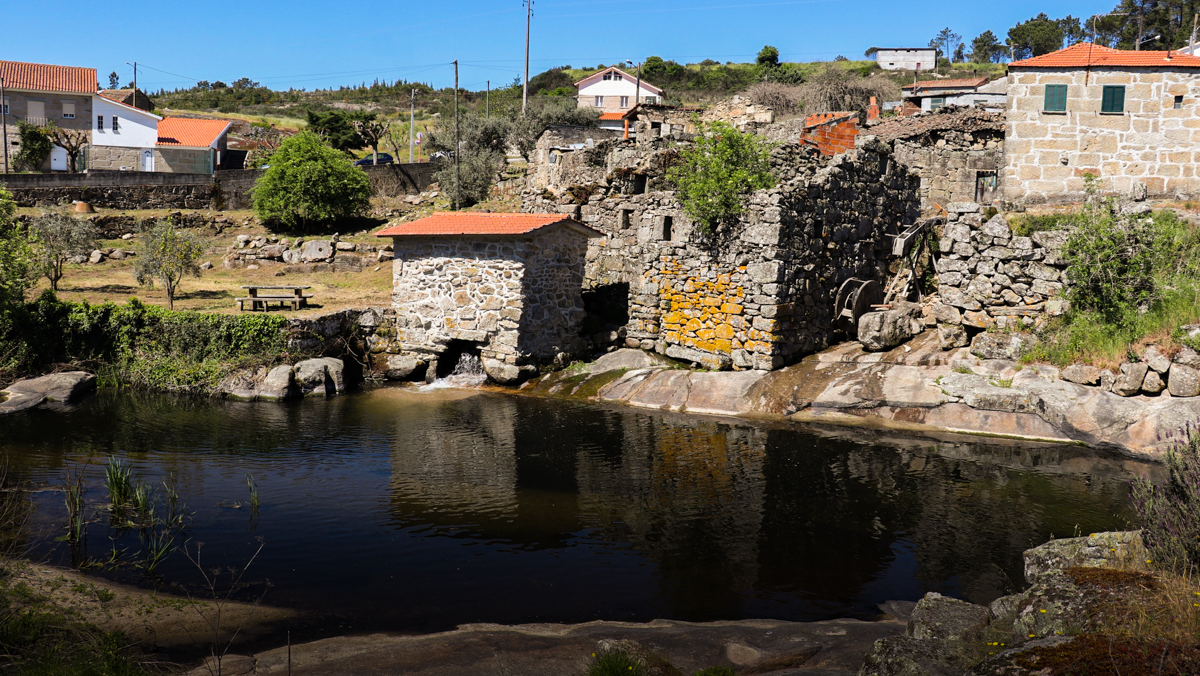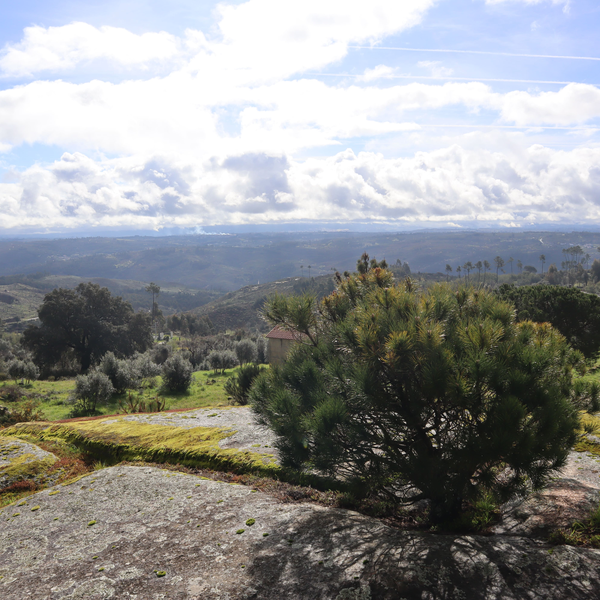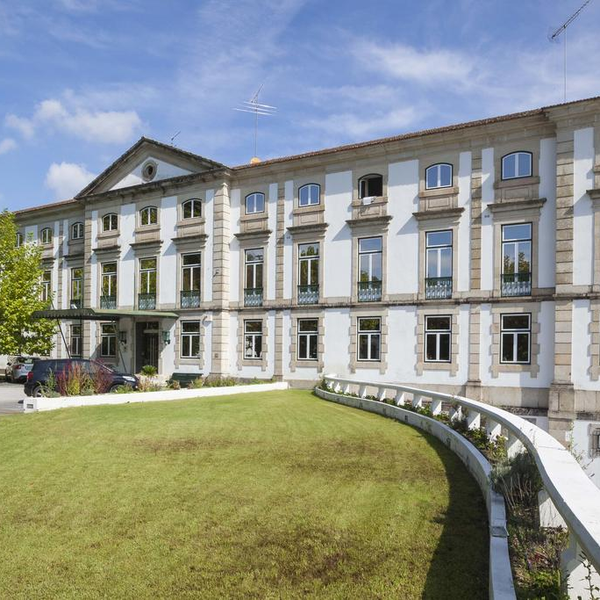
NELAS
Since ancient times, Nelas has played a crucial role as a link between the coast and the interior, situated between the Caramulo and Estrela mountains. The ancient Roman roads moulded the territory, stimulating the settlement of communities and contributing to the development of a cultural identity that endures to this day, keeping the medieval boundaries between the Dão and Mondego rivers practically intact.
Located in the heart of the Dão Region, between the Dão and Mondego rivers, and graced by nature's generosity, Nelas enjoys a strategic location, surrounded by lush landscapes, pine forests and vineyards. The municipality's rich heritage is evidenced by its renowned wines, typical Beira cuisine and vibrant culture, expressed in emblematic events such as the Dão Wine Fair, the Nelas and Canas de Senhorim Carnival, the Popular Marches and the Canas de Senhorim Medieval Journey.
From the charms of the historic centre of Canas de Senhorim to the banks of the River Castelo, from the Cultural Village of Lapa do Lobo to the nobility of the wine-growing village of Santar, the itineraries offer a fascinating variety. In the countryside, Caldas da Felgueira is a true refuge, with stunning landscapes and a modern Thermal Centre that offers unique treatments and wellness programmes. It is therefore a municipality that harmonises history, nature, culture and health in a unique way.




Mills of Senhorim
HeritageAlong the banks of the Castelo and Videira rivers are several water mills. These roller mills, treasures of the rural world, represent structures that were once fundamental to the survival of local communities, allowing them to grind cereals, mainly maize and rye.
When you take the Moinhos do Castelo Walking Route (PR1 NLS), enjoy nature, listen to the river and appreciate the molinological heritage of the ‘Lands of Senhorim’.

Miners' Quarter or Old Maltese Quarter
HeritageAfter radio exploration (1913-1944), it was from 1951 that real uranium exploration began at the Urgeiriça mines. The Luso-British Agreements signed in July 1949 were in force between 1951 and 1962. It was during this period that the most intensive uranium exploration took place at Urgeiriça. The possibility of producing tonnes of uranium ore concentrates for the foreign market, especially for the United States of America and England, meant hiring a large number of workers.
As well as local workers, from the 1950s onwards the mines began to employ miners from all over the centre and north of Portugal, many of them with mining experience acquired in the Borralha (Montalegre) and Panasqueira (Covilhã and Fundão) mines. These were humble men who left their natural surroundings in groups or alone in search of better living conditions for their families. These miners were known as ‘Maltese’ among the locals. They were housed in spaces rented or owned by the mines. In Urgeiriça, four wooden barracks were used temporarily, located on the road to Quinta da Vitória and, later, in this neighbourhood.
The 1950s saw major urban transformations in Urgeiriça, especially around the mining complex. Housing and various infrastructures were built that were fundamental to the survival and well-being of the mining community, giving rise to the appearance of the Bairro de Cima, formed by the Miners' Quarter or Old Maltese Quarter. Accommodation for the ‘Maltese’ was built on this site, which is why the name for this residential area of Urgeiriça was also perpetuated locally.

Folhadal Viewpoint
HeritageFrom the Folhadal Viewpoint, also known as Laje Grande, there are vast panoramic views of the areas to the north-east, east and south. The Mondego valley is just a few metres away, followed by the territories that, like the one we're in, form the so-called Beira Alta Platform or Mondego Platform. It's a wide area of flat land, carved out by the Dão and Mondego rivers and their tributaries, which extends from the Serra da Estrela to the Serra do Caramulo.
The waters that form these rivers are mainly responsible for the dissection of this immense surface, which can partly be seen from here. The Mondego meanders through the hillsides that it has opened up over the millennia, some of which are dedicated to the cultivation of terraced vines, and granite dominates the landscape, although it is largely hidden by thriving shrub vegetation.

Mondego River: from the century-old bridge to the old buvette of cold waters
HeritageIn the spa village of Caldas da Felgueira, right on the banks of the River Mondego, you can enjoy what thermal history and river nature have to offer. On the upper level of this site, in addition to the century-old bridge, through which you can glimpse the Mondego riverbed, you can also enjoy the picnic area.
On the right bank, right next to the riverbed, enjoy the leisure and recreational area with the sound of the Mondego's water. At the same time, don't forget to appreciate some of the village's thermal history through the former buvette of the cold medicinal waters of Caldas da Felgueira, a building with a unique artistic and architectural expression. It is a neo-Arab revivalist building with a clear link to 19th century Romanesque principles, especially in its architectural and decorative configuration.
Its location, next to one of Caldas da Felgueira's main road accesses, history and architectural and artistic beauty make this building one of the most important tourist attractions in this Portuguese village.

Caldas da Felgueira, the Thermal Village
HeritageThe waters of Caldas da Felgueira, mentioned in the Parish Memoirs of 1758, ordered by the Marquis of Pombal, only began to be exploited thermally at the beginning of the 19th century. These memoirs mentioned a hot, sulphuric spring on the edge of Vale de Madeiros.
At the Universal Exhibition in Paris in 1867, its therapeutic qualities were recognised and with the opening of the Beira Alta Line in 1882 and the consequent easier access to this inland area on the edge of the Mondego, demand increased considerably. It was at this time that José Maria Marques Caldeira was awarded the concession to operate the centre, creating the Companhia das Águas Medicinais de Felgueira, and shortly afterwards, in 1886, the Nova Companhia do Grande Hotel Club das Caldas da Felgueira was born. The modern-day Thermal Centre opened to the public in 1997, after major renovation and expansion work.

Orca das Pramelas
HeritageKnowing and understanding the territory of the municipality of Nelas in the 21st century means travelling back 6,000 years through the history of a local geography that is currently dotted with archaeological and historical remains.
The Orca das Pramelas is one such example. It is a megalithic funerary monument that is around 6,000 years old.

Nelas Parish Church
HeritageThe parish church was built in the first half of the 19th century to serve as the chapel of the Brotherhood of St Michael. It was precisely in 1965 that work began on extending the worship space to serve as the Mother Church of Our Lady of the Conception, a worship service that was relocated from the original building, located in the current São João de Deus square.
The main feature of this place of worship is its interior, especially the altarpiece in the chancel. As you enter, you'll see the exuberance and grandeur of the altarpiece structure, which follows the canons of the Joanine style. However, another important fact about this altarpiece is its origin. It was originally designed for the church of the convent of Santo António, located in the city of Viseu. With the extinction of the religious orders in 1834, the Brotherhood of St Michael the Archangel of Nelas, which was building its chapel, acquired this altar and it is still in the Main Church today.

Santar, the noble town
HeritageWhen you visit Santar, take a stroll through the squares, streets and alleys that were once places of residence and passage for various noble families of the Portuguese crown. A village of gardens, manors, wineries and vineyards, it is now a town that lives in the present, preserving and publicising its history.

Statue to the Escanção
HeritageInaugurated in 1966, this unique statue was inspired by the figure of the sommelier Fernando Ferramentas, who at the time worked at the Aviz Hotel in Lisbon and who founded the Associação dos Escanções de Portugal.
It was commissioned from the famous sculptor Domingos Soares Branco by the then President of the Caldas de Felgueira Tourism Board, Eurico de Amaral, who had always recognised in the figure of the sommelier the professional par excellence for promoting the wine of his region.
In this statue, the sommelier is dressed in modern clothes, with the symbolic tambuladeira that characterises him. On the plinth is the tribute caption: ‘To the Sommelier for Serving Well’.
On the back of the base of the granite statue, the identification of 20 grape varieties (red and white) characteristic of the Dão. In them, he can be proud of having erected the world's first monument to the escanção, right in the heart of the Dão.

Alminhas Woods
HeritageAlso known as the São Miguel Park, it is a leisure and recreational space located in the heart of the town of Nelas. At the same time, you can appreciate one of the many monuments in the municipality of Nelas dedicated to the Alminhas.
The perpetuation of this place name reveals a clear desire on the part of the local authority and community to preserve and value their religion, memory, belief, experience and, above all, their past.





